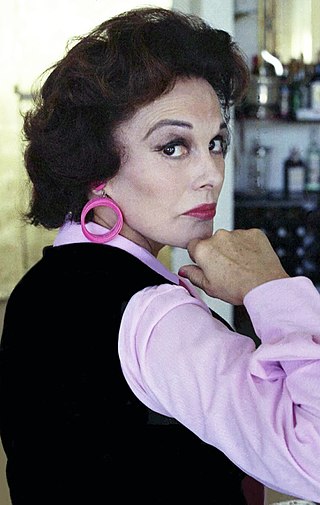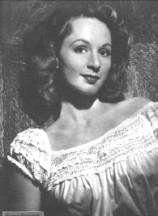
Snow White and the Seven Dwarfs is a 1937 American animated musical fantasy film produced by Walt Disney Productions and released by RKO Radio Pictures. Based on the 1812 German fairy tale by the Brothers Grimm, the production was supervised by David Hand, and was directed by a team of sequence directors, including Perce Pearce, William Cottrell, Larry Morey, Wilfred Jackson, and Ben Sharpsteen. It is the first animated feature film produced in the United States and the first cel animated feature film.

The Thief of Bagdad is a 1924 American silent adventure film directed by Raoul Walsh and starring Douglas Fairbanks, and written by Achmed Abdullah and Lotta Woods. Freely adapted from One Thousand and One Nights, it tells the story of a thief who falls in love with the daughter of the Caliph of Baghdad. In 1996, the film was selected for preservation in the United States National Film Registry by the Library of Congress as being "culturally, historically, or aesthetically significant".

Abū Jaʿfar Hārūn ibn Muḥammad ar-Rāshīd, or simply Hārūn ibn al-Mahdī, famously known as Hārūn ar-Rāshīd, was the fifth Abbasid caliph of the Abbasid Caliphate, reigning from September 786 until his death in March 809. His reign is traditionally regarded to be the beginning of the Islamic Golden Age. His epithet al-Rashid translates to "the Orthodox", "the Just", "the Upright", or "the Rightly-Guided".

"Snow White" is a German fairy tale, first written down in the early 19th century. The Brothers Grimm published it in 1812 in the first edition of their collection Grimms' Fairy Tales, numbered as Tale 53. The original German title was Sneewittchen; the modern spelling is Schneewittchen. The Grimms completed their final revision of the story in 1854, which can be found in the 1857 version of Grimms' Fairy Tales.

Laurence Harvey was a Lithuanian-born actor. He was born to Lithuanian Jewish parents and emigrated to South Africa at an early age, before later settling in the United Kingdom after World War II. In a career that spanned a quarter of a century, Harvey appeared in stage, film and television productions primarily in the United Kingdom and the United States.

Cinderella is a 1950 American animated musical fantasy film produced by Walt Disney Productions and released by RKO Radio Pictures. Based on Charles Perrault's 1697 fairy tale, it features supervision by Ben Sharpsteen. The film was directed by Wilfred Jackson, Hamilton Luske, and Clyde Geronimi. The film features the voices of Ilene Woods, Eleanor Audley, Verna Felton, Rhoda Williams, James MacDonald, and Luis van Rooten.

George Tobias was an American theater, film and television actor. He had character parts and supporting roles in several major films of Hollywood's Golden Age. He is also known for his role as Abner Kravitz on the TV sitcom Bewitched from 1964 to 1971.

Sam Katzman was an American film producer and director. Katzman's specialty was producing low-budget genre films, including serials, which had disproportionately high returns for the studios and his financial backers.

John George Agar Jr. was an American film and television actor. He is best known for starring alongside John Wayne in the films Sands of Iwo Jima, Fort Apache, and She Wore a Yellow Ribbon. In his later career he was the star of B movies, such as Tarantula!, The Mole People, The Brain from Planet Arous, Revenge of the Creature, Flesh and the Spur and Hand of Death. He was the first husband of Shirley Temple.

Robert Jolin Osborne was an American film historian, author, actor and the primary television host for the premium cable channel Turner Classic Movies (TCM) for over twenty years. Prior to hosting at TCM, Osborne had been a host on The Movie Channel and American Movie Classics (AMC). He had also worked as a news columnist for The Hollywood Reporter. Osborne wrote the official history of the Academy Awards, with the first edition published in 1988.

Kid Millions is a 1934 American musical film directed by Roy Del Ruth, produced by Samuel Goldwyn Productions, and starring Eddie Cantor. Its elaborate "Ice Cream Fantasy Finale" production number was filmed in three-strip Technicolor, one of the earliest uses of that process in a feature-length film.

Patricia Paz Maria Medina was a British actress. She is perhaps best known for her roles in the films Phantom of the Rue Morgue (1954) and Mr. Arkadin (1955).

Gregory Gaye was a Russian-American character actor. The son of an actor, he was born in St. Petersburg, Russia. He was the uncle of actor George Gaynes.

The Gay Falcon is a 1941 American mystery thriller film directed by Irving Reis and starring George Sanders, Wendy Barrie and Allen Jenkins. A B film produced and distributed by RKO Pictures, it the first in a series of sixteen films about a suave detective nicknamed The Falcon. Intended to replace the earlier The Saint detective series, the first film took its title from the lead character, Gay Laurence. Sanders was cast in the title role; he had played The Saint in the prior RKO series. He was teamed again with Wendy Barrie who had been with him in three previous Saint films. The first four films starred Sanders as Gay Lawrence and the rest featured Tom Conway, Sanders' real-life brother, as Tom Lawrence, brother of Gay.

Elaine Elizabeth Shepard was a Broadway and film actress in the 1930s and 1940s. She was also the author of The Doom Pussy, a semi-fictional account of aviation in the Vietnam War.

Sa'd ibn Abi Waqqas ibn Wuhayb al-Zuhri was an Arab Muslim commander. He was the founder of Kufa and served as its governor under Umar ibn al-Khattab. He played a leading role in the Muslim conquest of Persia and was a close companion of the Islamic prophet Muhammad.

Wanda Maximoff is a character primarily portrayed by Elizabeth Olsen in the Marvel Cinematic Universe (MCU) media franchise based on the Marvel Comics character of the same name. Wanda is initially depicted as a Sokovian refugee who, along with her twin brother Pietro, volunteers to be experimented on by Hydra. The Mind Stone amplifies her natural telekinetic and energy manipulation abilities, later known as Chaos magic. Wanda initially conflicts with the Avengers but later joins them to defeat Ultron, becoming one of their most powerful members.

WandaVision is an American television miniseries created by Jac Schaeffer for the streaming service Disney+, based on Marvel Comics featuring the characters Wanda Maximoff / Scarlet Witch and Vision. It is the first television series in the Marvel Cinematic Universe (MCU) produced by Marvel Studios, sharing continuity with the films of the franchise, and is set after the events of the film Avengers: Endgame (2019). It follows Wanda Maximoff and Vision as they live an idyllic suburban life in the town of Westview, New Jersey, until their reality starts moving through different decades of sitcom homages and television tropes. Schaeffer served as head writer for the series, which was directed by Matt Shakman.

"The Series Finale" is the ninth episode and series finale of the American television miniseries WandaVision, based on Marvel Comics featuring the characters Wanda Maximoff / Scarlet Witch and Vision. It follows Wanda as she tries to protect the idyllic suburban life and family that she created in the town of Westview, New Jersey. The episode is set in the Marvel Cinematic Universe (MCU), sharing continuity with the films of the franchise. It was written by head writer Jac Schaeffer and directed by Matt Shakman.



















